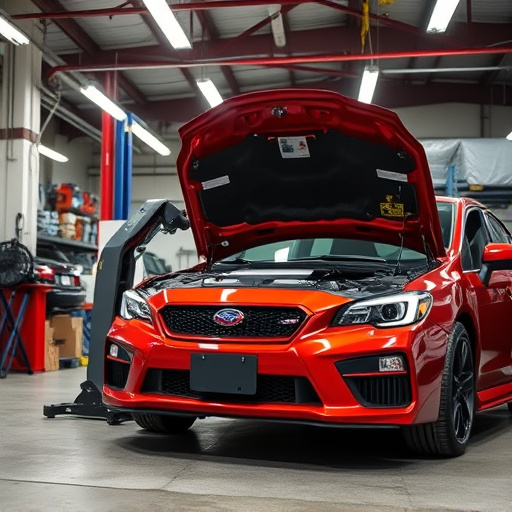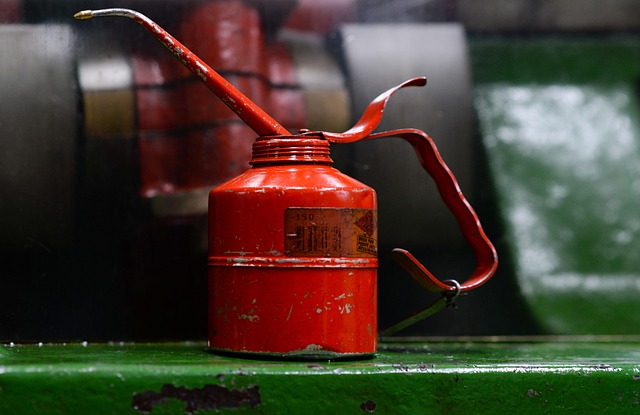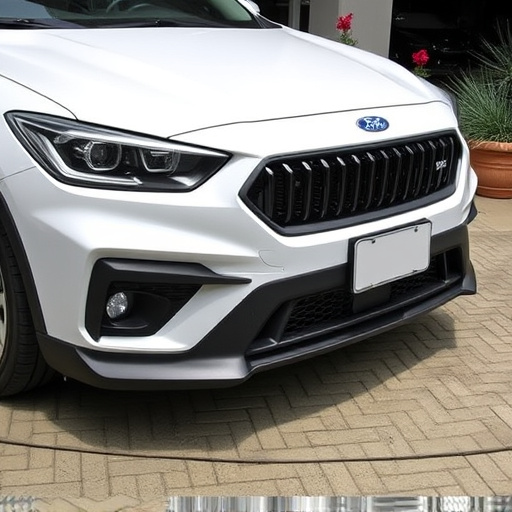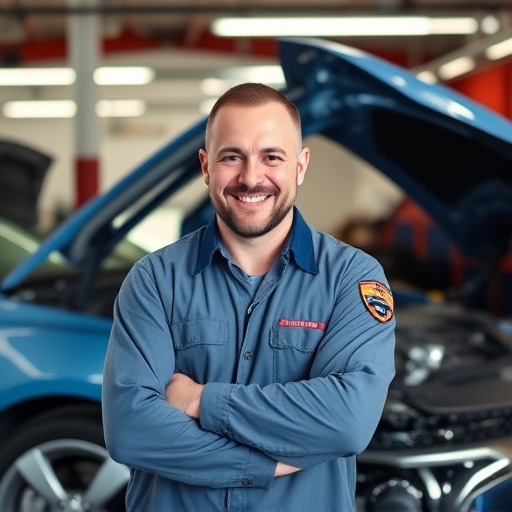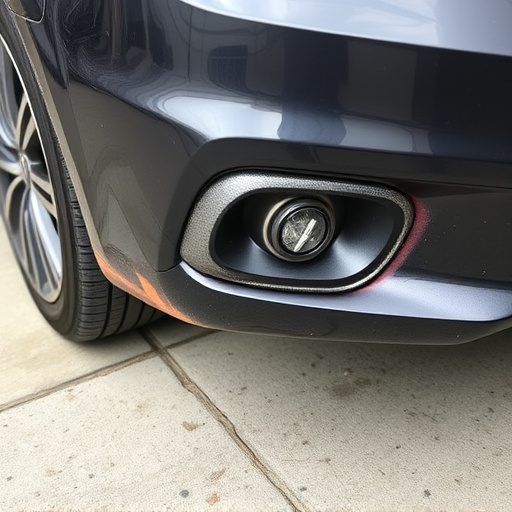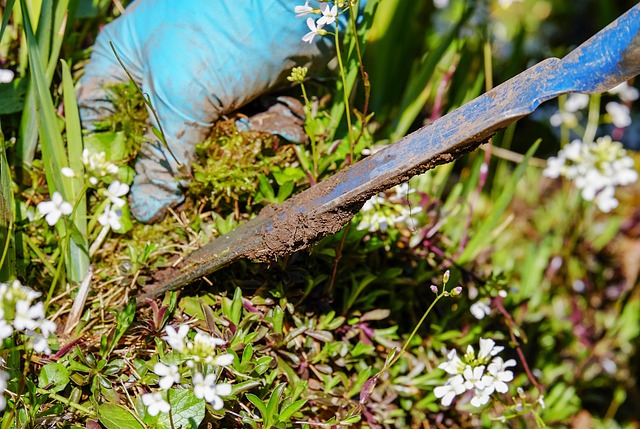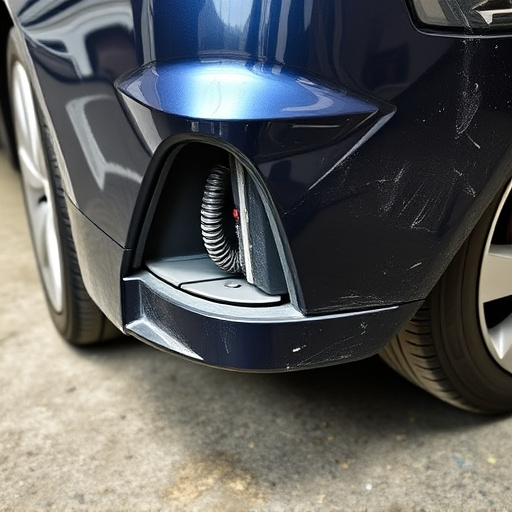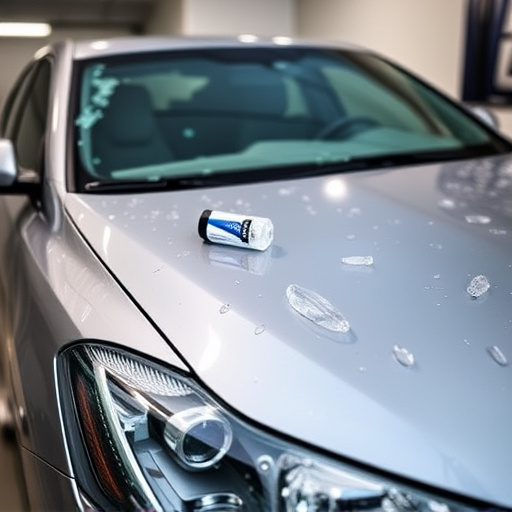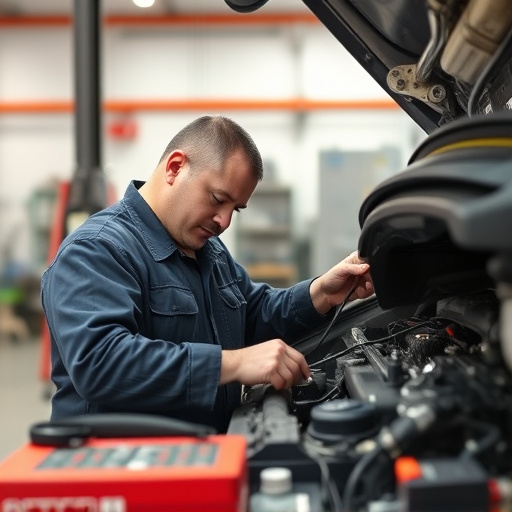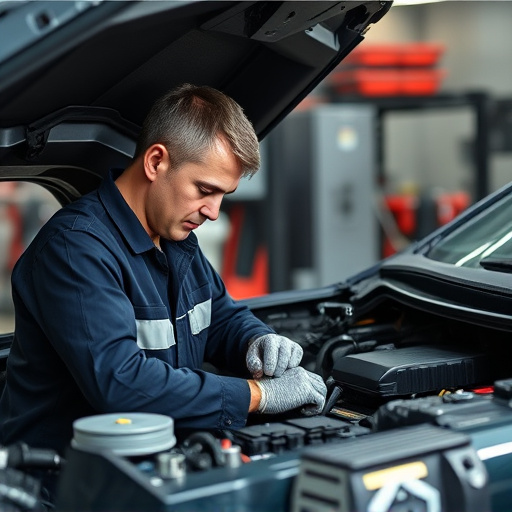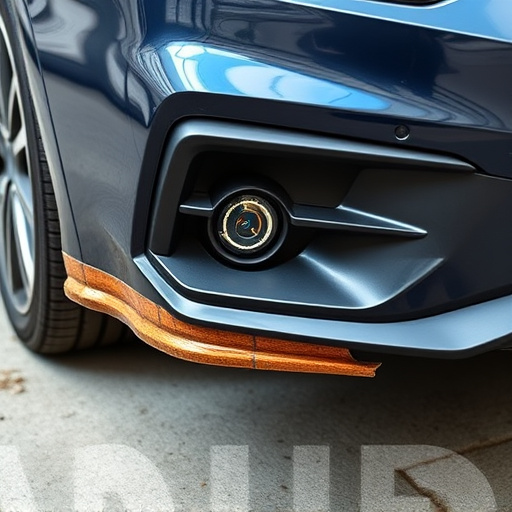Tesla's bumper cameras, strategically positioned for 360-degree visibility, are vital for advanced driver-assistance systems (ADAS), enhancing safety and convenience features like parking assist and Autopilot. These cameras can suffer damage requiring DIY repair or professional help. A manageable DIY project involves identifying the issue, gathering tools, removing and replacing the damaged camera, and recalibrating for optimal performance. Regular calibration is crucial to maintain accuracy in object detection, preventing safety risks. Professional auto repair services are recommended for precise Tesla bumper camera recalibration, ensuring enhanced functionality and safety.
Tesla’s advanced driver-assistance systems (ADAS) rely on crucial components like the bumper cameras, offering enhanced safety and awareness. This article guides you through the process of repairing and recalibrating these essential sensors. From understanding the role of Tesla bumper cameras and their sophisticated functionality to providing a step-by-step repair manual, we cover it all. Learn how to address common issues and ensure your vehicle’s safety features remain optimal after a repair.
- Understanding Tesla Bumper Cameras and Their Functionality
- Step-by-Step Guide to Repairing a Tesla Bumper Camera
- Recalibrating Safety Features: A Comprehensive Overview
Understanding Tesla Bumper Cameras and Their Functionality
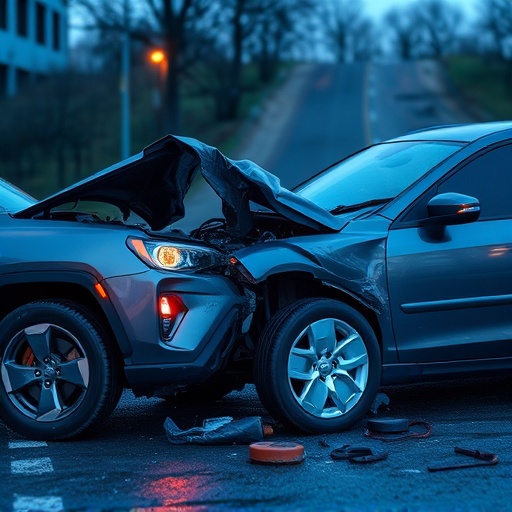
Tesla’s bumper cameras are an integral part of their advanced driver-assistance systems (ADAS), offering a 360-degree view around the vehicle for enhanced safety and convenience. These cameras, strategically positioned on the front and rear bumpers, serve as the eyes of the car, providing real-time visual data to support features like parking assist, lane departure warning, and collision avoidance. The footage from these cameras is processed by Tesla’s AI to detect obstacles, vehicles, and pedestrians, enabling proactive safety measures.
Properly functioning bumper cameras are crucial for not only navigation but also for the overall safety of the vehicle and its occupants. Over time, these cameras can suffer damage due to accidents, road debris, or normal wear and tear, necessitating a Tesla bumper camera repair. Additionally, periodic recalibration ensures the accuracy of the camera’s view, aligning it with the vehicle’s dynamics for optimal performance of ADAS features like Autopilot. Regular maintenance, including auto painting for repairs and tire services for wheel alignment, contributes to keeping these safety systems in top shape.
Step-by-Step Guide to Repairing a Tesla Bumper Camera
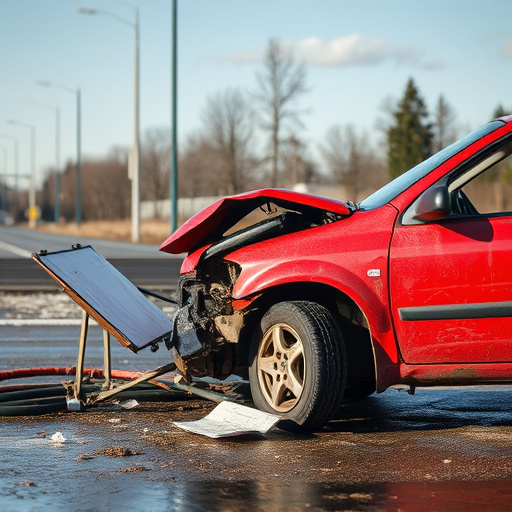
Repairing a Tesla bumper camera is a relatively straightforward process that can be accomplished with the right tools and some patience. Here’s a step-by-step guide to help you through the process, focusing on both efficiency and safety. Begin by identifying the issue: check for any damage to the camera itself or its mounting. If the camera is cracked or loose, it may need replacement. Before proceeding, ensure your vehicle is securely parked and the power is off to prevent any accidents during repair.
Next, gather your tools: you’ll need a suitable screw driver (often a Torx driver), a new Tesla bumper camera (if necessary), and possibly some adhesive or screws to secure it properly. To replace the camera, carefully remove the damaged one by unscrewing its housing from the bumper. Clean the area thoroughly to ensure no debris interferes with the new camera’s performance. Install the new camera by securing it in place with the appropriate fasteners. Double-check all connections and screw placements before moving on. For optimal results, consider professional vehicle repair services for complex car damage repair or following Tesla’s official guidelines for vehicle collision repair.
Recalibrating Safety Features: A Comprehensive Overview
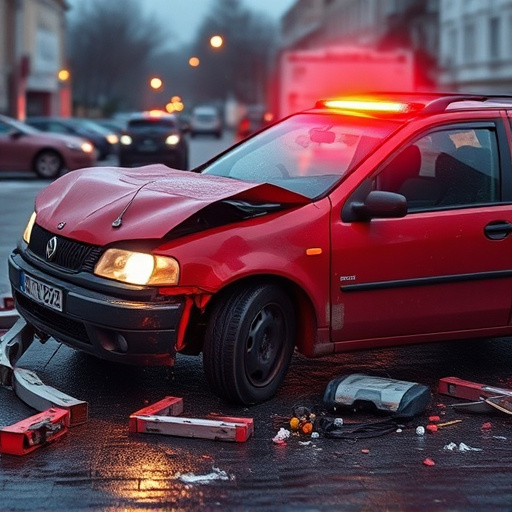
Recalibrating safety features on your Tesla is a crucial aspect of maintaining optimal driving performance and ensuring the integrity of advanced driver-assistance systems (ADAS). These systems, including the bumper camera, play a vital role in collision avoidance and active safety. Over time, as with any vehicle, calibration can drift, leading to reduced accuracy and potential safety risks.
When it comes to Tesla bumper camera repair and recalibration, it involves fine-tuning the camera’s settings to ensure it provides accurate and reliable data for the vehicle’s safety features. This process typically requires specialized tools and knowledge, making it best suited for professional auto repair services. During calibration, technicians adjust parameters like focal length, image stabilization, and exposure settings to match the specific vehicle model and its unique environment. Proper recalibration ensures that the bumper camera accurately identifies objects, pedestrians, and other vehicles, enabling timely reactions from the ADAS systems. It’s a meticulous process that, when done correctly, can significantly enhance both the functionality and safety of your Tesla.
In conclusion, understanding and mastering Tesla bumper camera repair and safety feature recalibration is essential for any Tesla owner. By following the step-by-step guide provided, you can effectively fix damaged cameras and ensure your vehicle’s advanced safety systems function optimally. Remember that proper maintenance and timely repairs are key to maximizing the benefits of these innovative features, enhancing both your driving experience and overall safety on the road. For all things related to Tesla bumper camera repair, these comprehensive resources offer a reliable guide to keeping your vehicle in top condition.
